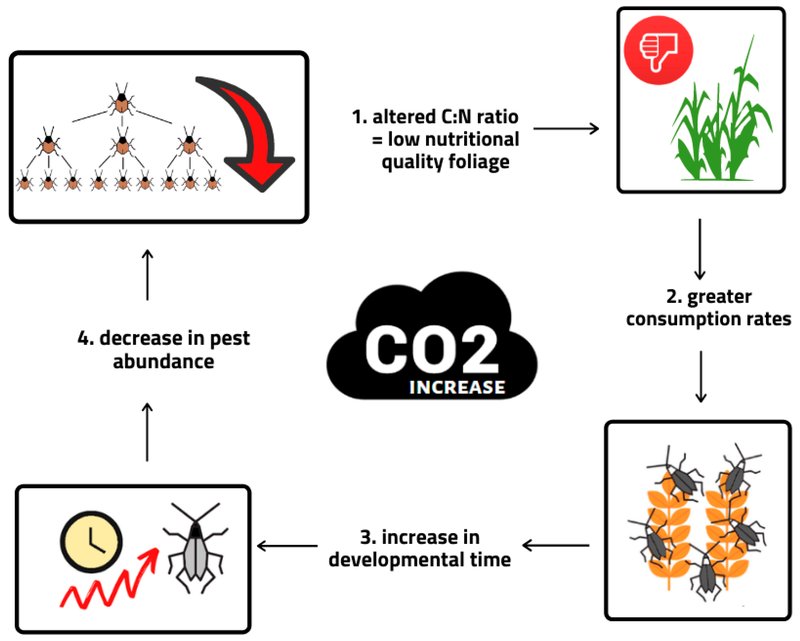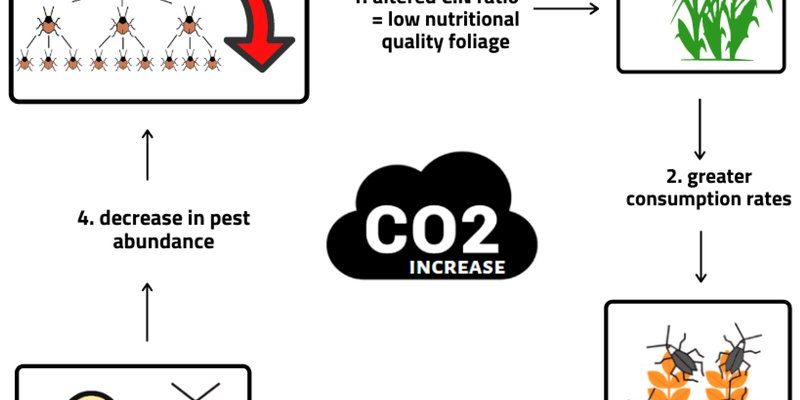
Inchworms are the larvae of moths and are known for their unique movement that resembles measuring inches—hence the name. They can be found in various habitats, from woodlands to gardens, munching on leaves as they grow. But what happens to these little guys when the climate goes haywire? Here, we’ll explore the effects of climate change on inchworm populations, and along the way, I’ll try to paint a clear picture of how intertwined their lives are with the world around them.
What Are Inchworms, Anyway?
Before diving into climate change, let’s take a moment to understand inchworms a bit better. They belong to the Geometridae family, and their unique movement style gives them their name. When they move, they create a loop, drawing their bodies up and then extending forward—a bit like they’re measuring the distance they travel.
Inchworms are primarily found feeding on the leaves of trees and shrubs. They play a vital role in the ecosystem, serving as food for birds and other predators. If you think about it, they’re like the unsung heroes of the food web. Without them, many animals would lose a critical food source, affecting the entire food chain.
Their lifecycle consists of several stages: egg, larva (the inchworm), pupa, and finally, adult moth. Each stage is affected by environmental factors, making them sensitive to changes in temperature and weather patterns. So, how will climate change affect these tiny creatures?
Temperature Changes and Inchworms
One of the most direct ways climate change affects inchworms is through rising temperatures. Inchworms thrive in specific temperature ranges, and as the climate warms up, it can disrupt their life cycles. Here’s the thing: if it gets too hot, they might not develop properly, or worse, they could die before reaching adulthood.
Warmer temperatures can also lead to earlier hatching times. This means inchworm larvae might emerge before their food sources are available, leading to a struggle to survive. If they’re munching on leaves that aren’t fully developed, they won’t get the nutrients they need to grow. So, it’s a bit of a double whammy—they can hatch too early and starve!
To put it simply, think of it like this: if you opened your favorite restaurant only to find that the chef is late, you wouldn’t be able to enjoy your meal, right? That’s how inchworms feel when their leaf supply doesn’t sync with their hatching time.
Shifts in Food Availability
Speaking of food, climate change can also impact the plants that inchworms rely on. As temperatures and precipitation patterns change, some tree species may struggle to survive in their current habitats. This could lead to a decline in the very leaves that inchworms feed on, making it harder for them to find a meal.
For example, trees like oaks and willows, which are popular choices for inchworm larvae, might not thrive in warmer climates. If these trees move north or disappear altogether, inchworms may have to search for new food sources, which may not be readily available. It’s like suddenly being thrown into a new neighborhood where all your favorite hangouts have closed down.
Additionally, invasive plants might take the place of native ones. Inchworms often have specific host plants they prefer. If those disappear and are replaced by non-native species, it may not only confuse them but also impact their growth and reproduction.
Increased Predation and Disease
As the climate changes, it doesn’t just affect inchworms; it alters the entire ecosystem—even their predators. Warmer temperatures can lead to an increase in certain bird populations that feed on inchworms. More predators mean inchworms have a tougher time surviving. It’s a cycle; as inchworms decline, their predators may need to find alternative food sources, leading to further imbalance.
Increased humidity and changing weather can also promote diseases that affect inchworm populations. The same mold or bacteria that thrive in warmer, wetter conditions could spell trouble for these little guys. When they get sick, their populations can start to dwindle, which impacts the food web even more.
Imagine living in a neighborhood that is suddenly overrun by new pets that are ferociously hungry or having your house invaded by mold. It makes life a lot harder, doesn’t it? That’s the reality inchworms may face as climate changes throw them into a new, less hospitable environment.
Changes in Lifespan and Reproduction
Climate change isn’t just affecting where inchworms eat; it’s also altering how many of them can survive to adulthood. Warmer temperatures can lead to shorter lifespans. When time is limited, inchworms have to work harder to reproduce. If conditions aren’t right for a successful mating season, there may be fewer eggs laid.
Let’s break that down a little. If you think about how stressful it is when you’re rushing against a clock, inchworms face a similar pressure. When temperatures are erratic, and food sources become scarce, the stress can prevent them from mating successfully.
Plus, those environmental shifts can also determine how often they reproduce. If their habitat can no longer support enough food, they might have to scale back on reproduction. Fewer inchworms mean less biodiversity, which can have ripple effects throughout the ecosystem.
The Bigger Picture: Ecosystem Impact
So, why does it really matter if inchworm populations change? Well, they’re part of a larger web of life. As their numbers decline, so do the animals that rely on them for food. Birds, small mammals, and even other insects depend on inchworms. It’s a classic case of cause-and-effect in nature; one small change can lead to significant consequences.
Inchworms also play a role in plant health. When they feed, they can help control plant growth, contributing to a balanced ecosystem. If their populations diminish, certain plants may grow unchecked, leading to overcrowding and a loss of biodiversity. This, in turn, affects everything from soil quality to the availability of habitat for other species.
Imagine a jigsaw puzzle: if you take out one piece, the whole picture starts to break apart. That’s what climate change is doing to ecosystems worldwide, inchworms included, and every piece truly matters.
Inchworms may be small, but their significance in our ecosystem cannot be overstated. As climate change continues to impact their populations, we must pay attention. From the tiniest creatures to the largest mammals, every part of the ecosystem is interconnected.
By understanding how climate change may affect inchworm populations, we can start to see the bigger picture. It’s essential to take action—whether that’s supporting conservation efforts or simply being mindful of our environmental impact.
Remember, every small action counts, much like the inchworm’s slow but steady progress. If we all pitch in to protect our environment, we can help ensure a healthy habitat for inchworms and countless other species. After all, we’re all in this together, and it starts with awareness and understanding.

